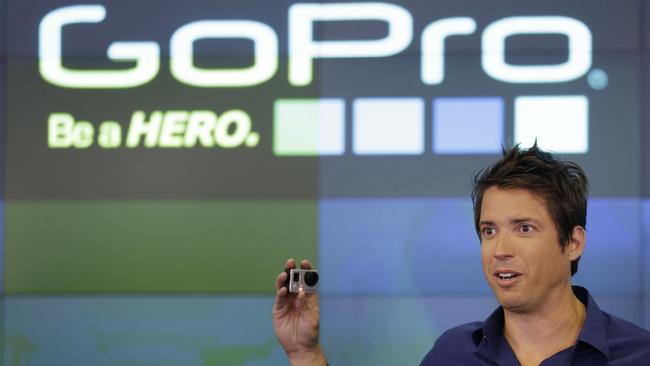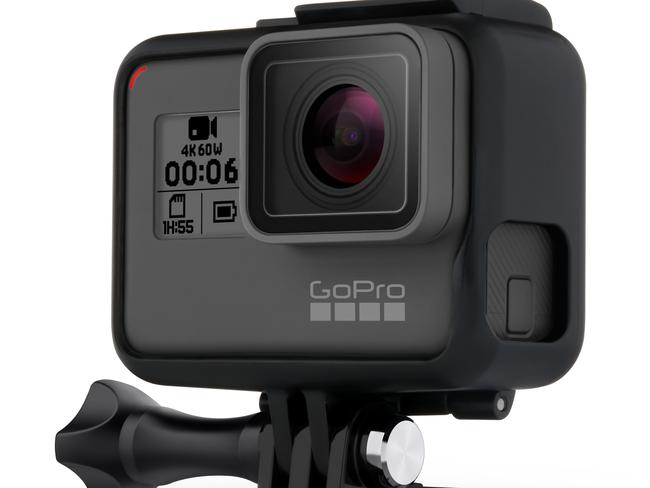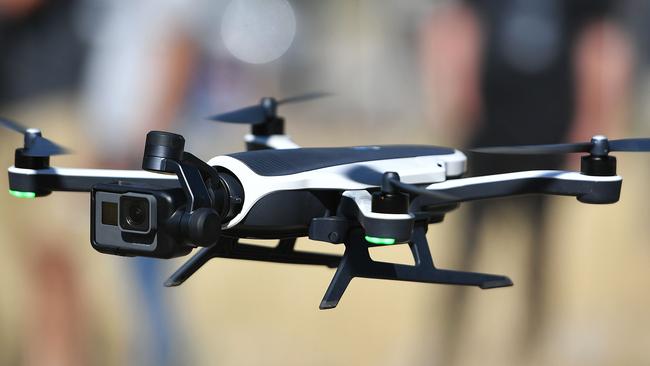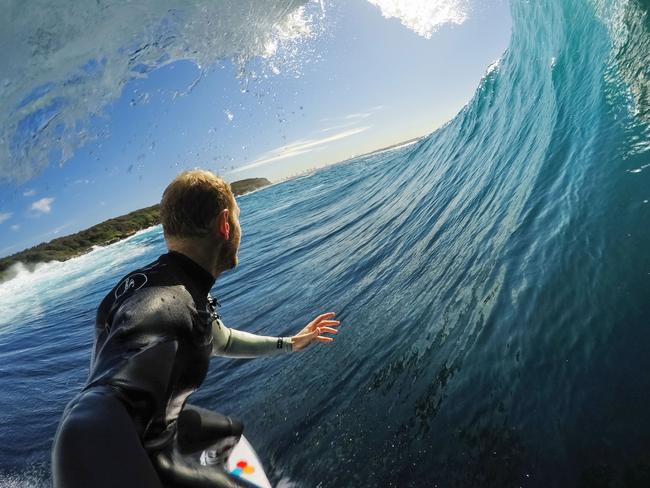GoPro shares drop by 20 per cent as stock plummets 90 per cent since 2014 peak
YOU can’t have an adventure without a GoPro in your hand filming the whole thing, but for the past few years people have been ditching it. Here’s why.
THERE aren’t many companies in the world that are as synonymous with adventure as GoPro is.
Whether you’re jumping out of a plane, surfing a wave or scaling a building, the company has built a reputation for being the camera every adventurer needs.
But despite having one of the strongest brand names in the world, GoPro is in trouble and for the past three years, has been steadily losing hundreds of millions in revenue.
Earlier today, GoPro announced its preliminary fourth quarter results for 2017, forecasting a sharp decline in revenue to $US340 million — 40 per cent less than the amount it posted in the same quarter in 2016.
The company is now undergoing massive changes, reportedly enlisting the help of JP Morgan to find a buyer for the brand while CEO Nick Woodman slashes his 2018 cash compensation from $US800,000 to $US1.
Ever since listing on the stock market in 2014, GoPro has reported losses in 2015 and 2016 but said it was “committed to turning around” the business.
Here’s why it might be trickier than the company thinks.

‘THE GOLDEN CHILD ISN’T SO GOLDEN ANYMORE’
Experts speculate a number of reasons why GoPro’s previous domination of the action-camera scene is weakening.
Technology commentator Trevor Long said it has a lot to do with the price.
“There’s obviously a lot of cheaper action cameras on the market now and even though GoPro pioneered the action camera market, there are a lot more competitors now,” Mr Long told news.com.au.
Responding to a weak demand for cameras in the holiday period of 2017, GoPro slashed the prices of its more recent cameras.
The company cut $100 off the original selling price of its HERO5 Black and Session versions and also cut $100 off its HERO6 Black premium model.
In Australia, the HERO5 Black now retails for $430 while the HERO6 Black costs $600.
“As we noted in our November earnings call, at the start of the holiday quarter we saw soft demand for our HERO5 Black camera,” Mr Woodman said. “Despite significant marketing support, we found consumers were reluctant to purchase HERO5 Black at the same price it launched at one year earlier. Our December 10 holiday price reduction provided a sharp increase in sell-through.”
Globally, it led to the sales of the cameras doubling and tripling respectively but it was also part of a number of measures that will cost the company $US80 million ($A101 million).

Mr Long said GoPro, once dubbed “the golden child”, “isn’t so golden anymore” and its inability to embrace innovative tech devices like 360-degree cameras and drones has been detrimental to the brand.
“They really missed the boat on drone technology and even though they did bring out their own version of a drone it had to be recalled, which definitely wasn’t a good look for them,” Mr Long said.
As part of its 2018 strategy to return the company to a profit, GoPro announced it was exiting the drone market, killing its own version called Karma, which was first released in 2016.
In Australia, Karma cost $1350 — without the camera.
Despite being the second-best-selling drone in its price range in 2017, the company said a “hostile regulatory environment in Europe and the United States” led to its end.
Karma was also plagued with technical difficulties and recalls after numerous customers reported crashes.
Cutting Karma from GoPro’s gadget line also means more than a fifth of the company’s staff will lose their jobs.
In September last year, 1254 people worked for the camera company. In 2018, GoPro will have less than 1000 employees worldwide.

The tech commentator said while the newest versions of the GoPro are much better than anything else they’ve ever brought out, not continuing to innovate has cost them.
“Innovation was the thing that made GoPro what it was and stopping that has cost them audience and loyalty,” Mr Long said.
Despite GoPro’s rough couple of years, the brand is still by far the strongest in the action-camera market — a ranking that is still worth a lot of money, Mr Long said.
“A lot of big companies would pay top dollar even just for the brand name,” he said, admitting GoPro partnering with a company like Sony could lead to huge things.
And clearly, it’s a venture GoPro boss Nick Woodman might be considering.
“If there are opportunities for us to unite with a bigger parent company to scale GoPro even bigger, that is something that we would look at,” the CEO told CNBC.
QUT Associate Professor and retail expert Gary Mortimer attributed GoPro’s struggles to the rapid development of smartphones.
“Their first value proposition was a very small, portable and durable camera and originally that worked extremely well for them,” Mr Mortimer said.
But unlike smartphones, GoPro’s value proposition didn’t evolve much past that — aside from increasing video quality.
Smartphones on the other hand became smaller and thinner, developed better cameras and became more durable.
Most smartphones now even have some level of water resistance — yet another example of the smartphone market mirroring GoPro’s most popular features.
Mr Mortimer said one of GoPro’s biggest draws was being able to film yourself being in the thick of the action whether it was surfing a wave or skiing down a mountain.
“You and your camera never used to be able to be part of the activity together. It was always one or the other but now, you can even put your phones underwater,” he said.
Mr Mortimer did however agree with GoPro’s decision to drop out of the drone market.
“In my experience, I’ve seen a lot of businesses fail because they grow simply for the sake of growth. Sometimes, that’s not the space you want to put yourself in where you’re exposing yourself to other businesses,” he said.

WILL GOPRO EARN BACK ITS ADVENTURE DEVOTEES?
Since it launched in 2004, diehard adventurers have sworn by the action-proof camera.
After billing itself as “one of the most exciting and aspirational companies of our time”, GoPro managed to raise $US490 million ($A623 million) before its entry into the stock market in 2014.
And, in the months after its debut, GoPro’s shares traded over three times above its initial public offering price of $US24 ($A30).
Some even argued it wasn’t technically just a camera company but a lifestyle brand similar to Facebook or Twitter, where people share their experiences with the brand socially.
Speaking to news.com.au last year, Woodman admitted he knew he wouldn’t be a self-made billionaire without that loyal fanbase posting their action-packed videos.
“Other companies can’t replicate the brand and our movement because we have millions of passionate customers sharing amazing videos shot on our products. There’s no advertising or social media campaign that can beat this type of exposure,” he said.
Woodman is also adamant all of the brand’s drastic changes including killing Karma, cutting staff and dropping his own salary will return the company to profitability by the second half of 2018.




